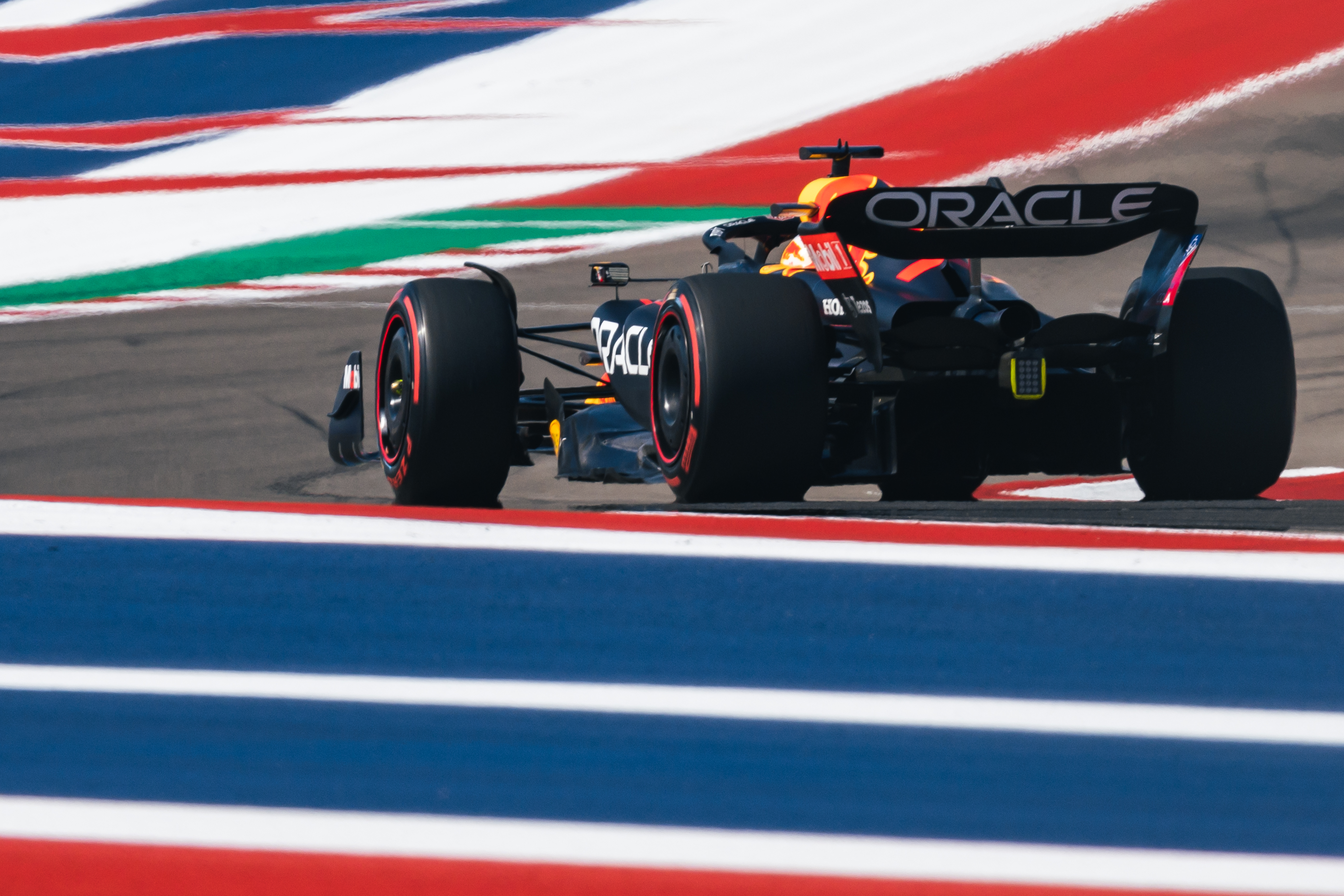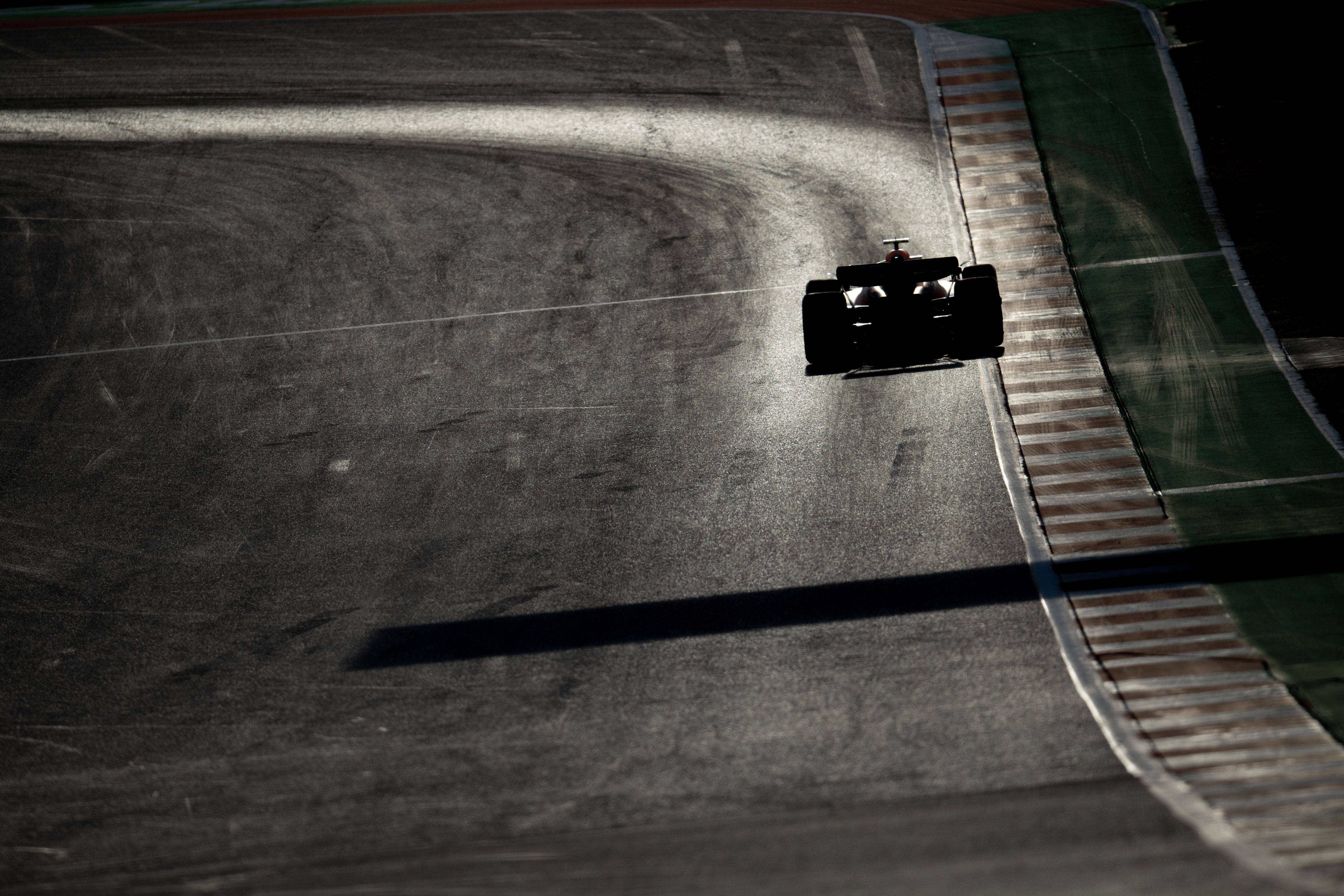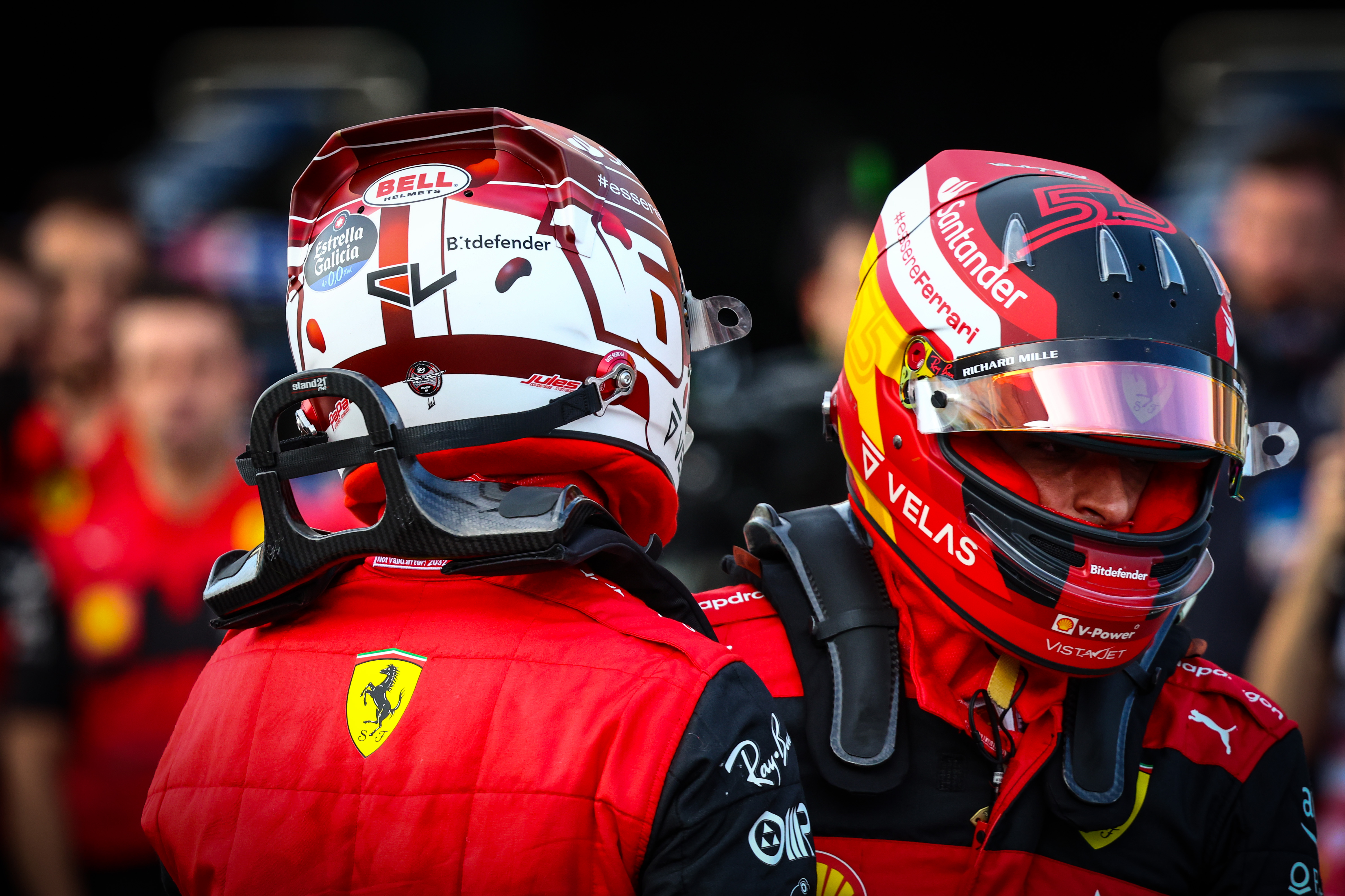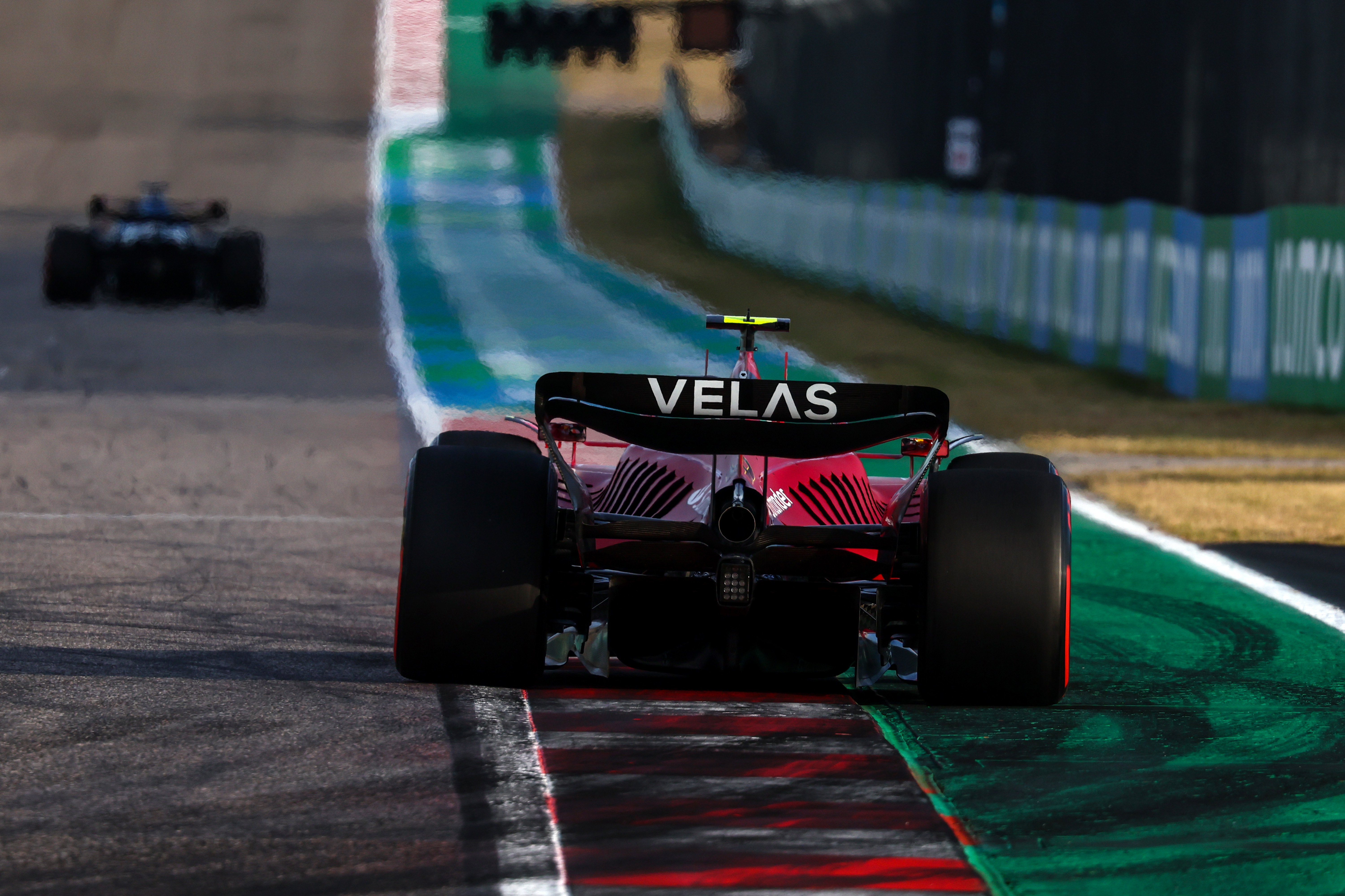Up Next

Behind every variation in the competitive order from track-to-track, often measured this year in hundredths of a second between Max Verstappen and the Ferrari pair Charles Leclerc and Carlos Sainz, are always many intricate details largely unappreciated by the watching world. Their importance varies from one weekend to the next, one layout to the other, one track temperature to another.
The fans witnessed Sainz take pole for the United States Grand Prix by six hundredths from team-mate Leclerc, with third-fastest Verstappen nine hundredths adrift. The story of how we arrived at this order rather than some other variation wasn’t just about who drove better or which car was intrinsically faster. In fact, those differences are likely so small as to be almost insignificant in this case. The crucial decider this weekend was the tyre preparation conundrum presented by this track, its layout, its surface and its windy gusts. That combination of demands meant that the difference between a new-tyre lap and that on a scrubbed set was way smaller than normal. Finding the sweet spot within that narrow window was verging on impossible. Especially for the Red Bull.

You may have noticed how Verstappen made his first Q3 run on a scrubbed set of the soft C4 tyre before switching to a brand-new set for his final run – but with the difference that he would do two preparation laps rather than the usual one. Neither was ideal – as Verstappen recounted afterwards: “On the first run I got a bad run through Turn 1 and lost 0.3s right there. On my second I had a big oversteer moment at the corner before last.” Regarding the experimentation with preparation laps, he acknowledged that this was a key difficulty this weekend. “On the low speed I was running out of tyre on either approach. It was great in the middle sector, but not at the end.”
Getting the fronts up to temperature on the prep lap without overheating the rear is a particularly difficult task generically this year – but even more so on the Red Bull than the Ferrari, the RB18 typically taking longer to fire the fronts up than the Ferrari. That was a much bigger disadvantage this weekend than usual, as explained by Pirelli’s chief engineer Simone Berra.

“In general here the difficulty is doing the out-lap to have well-balanced front and rear axle – to have performance from both axles. It’s always a matter not to overheat the rear but getting good temperature in the front tyres on the first timed lap into Turn 1. Even Sainz tried a second prep lap in Q1 and it worked. Then they tried to cover a little, changed their prep lap but to see if there is this kind of performance from a new tyre. And they managed to find it. Because a new tyre gives better peak grip but it’s more difficult to balance the requirements of the two axles on the prep lap.
“When you use a scrubbed tyre then the peak is gone and with less peakiness you can manage better the prep lap and sometimes be slightly faster. But the best theoretical solution is always new tyres with a good prep lap, managing the last sector, then go. You especially have to control the rear temperature. It looks like the Ferrari was maybe easier to balance the requirements of the two axles than the Red Bull over a prep lap.”
There are several reasons why this generic challenge is intensified by the Circuit of the Americas. “There is the layout and there are the bumps,” explains Berra. “There are many bumps and this is creating sliding and this is creating overheating. So it’s quite difficult to control the overheating. You are pushing because you need to get heat in front but that increases the probability you slide.
“The other point is we have new surface in first sector and part of the last. The new Tarmac is grippier than the old surface elsewhere on the lap so you even have to approach the prep lap on different parts of the track according to the surface. The old surface they are sliding more. Turn 11 before back straight it’s particularly difficult – because you have the old Tarmac and lots of bumps, and it’s difficult to put the traction down. You have to manage carefully the line you take there.”
Even the gusty wind played its part in the preparation-lap puzzle. “Yes especially on the soft tyre,” says Berra. “Because the wind can cause ‘squirrelling’ where the compound moves about on the construction of the tyre – and this causes overheating.”

None of this is to take away the achievement of Sainz in taking pole here. Even if it was an easier car to manage in qualifying than the Red Bull, the tyre prep challenge was still very much there – and Sainz’s experimentation in approach in Q1 was part of nailing it. Then the laps – tyre prep and flat-out qualifying lap – still had to be driven in tricky, gusty conditions. Leclerc – despite a new power unit and turbo (for which he will take a 10-place grid penalty) – fell foul of the gusty conditions on his final run, having headed the times after his first run. “Yes it was tricky with the wind,” he said, “and that last lap wasn’t my best. Carlos did a better job.”
“You don’t know how much grip to expect,” said Sainz, “because it’s changing by the lap with the wind. But given the conditions I think it was pretty much an error-free lap. I’ve been waiting for it to come. In the last five or seven races I’ve been so close.”
Indeed, it was only two weeks ago at Suzuka that he was rueing how the hundredths of a second difference never seemed to fall in his favour. Here it did.

But that tyre picture potentially looks quite different for the race – ironically for the same reason. The very thing which helps make the Ferrari an easier car to manage on a qualifying lap is what also tends to hurt it relative to the Red Bull over a race stint. “Yes from what we’ve seen this year, Ferrari is easier to get the front tyre temp. But in the race it can be you generate too much temperature and then the Red Bull looks better in a long stint.”
The soft C4 tyre is not expected to be widely seen in the race, because of its propensity for front graining and rear overheating around here. That potentially helps Ferrari a little. If everyone is on a combination of medium and hard for what looks set to be a two-stop race, the difference in tyre usage between the two cars is reduced. But it’s still there – as Sainz is only too aware. “I think Red Bull still start as favourites,” he said. “They normally have better race pace than us. But we will be trying hard for the win.”




